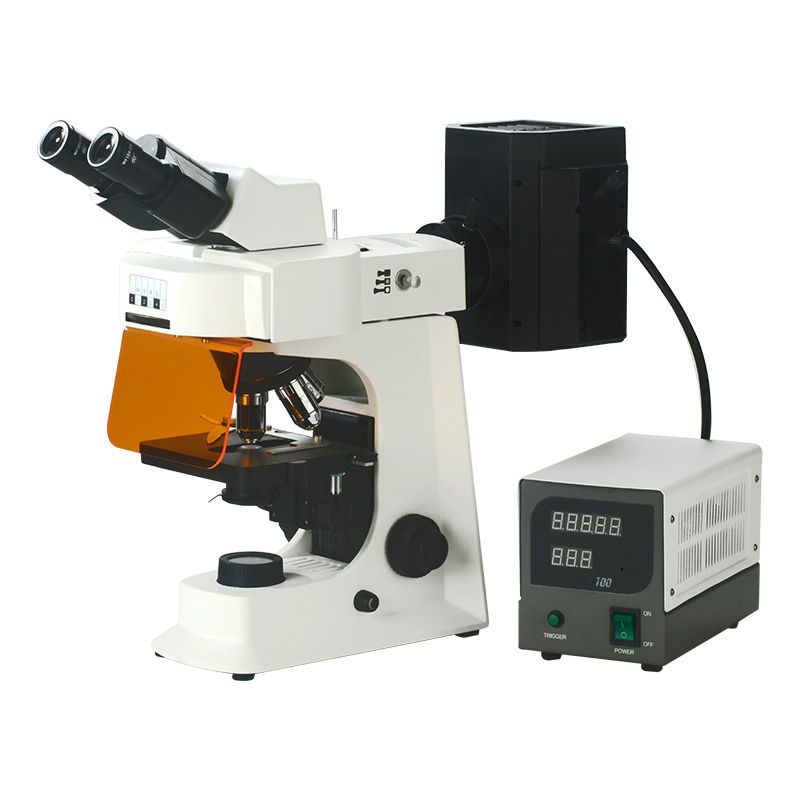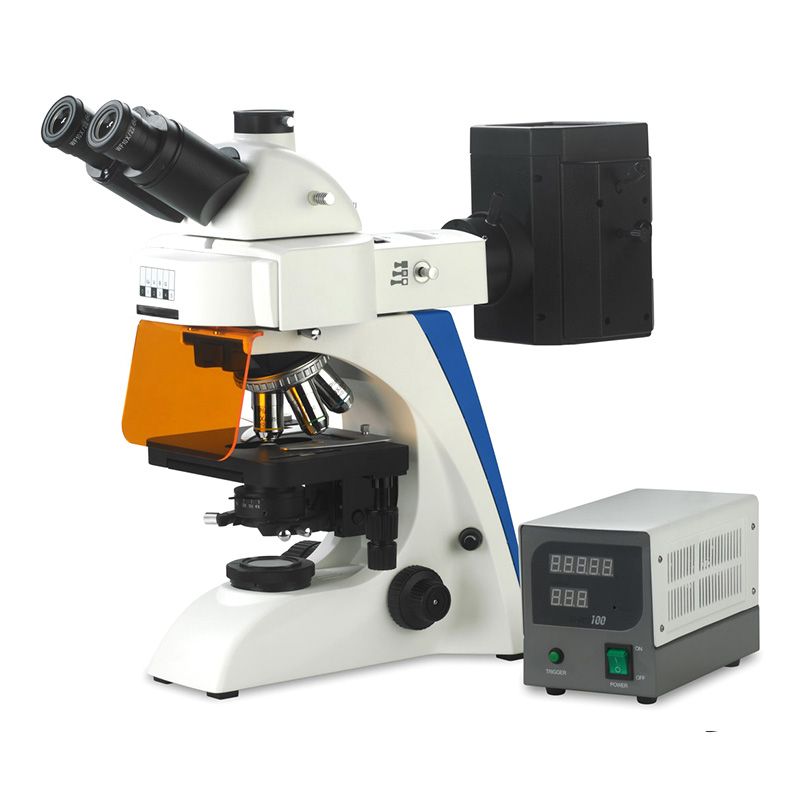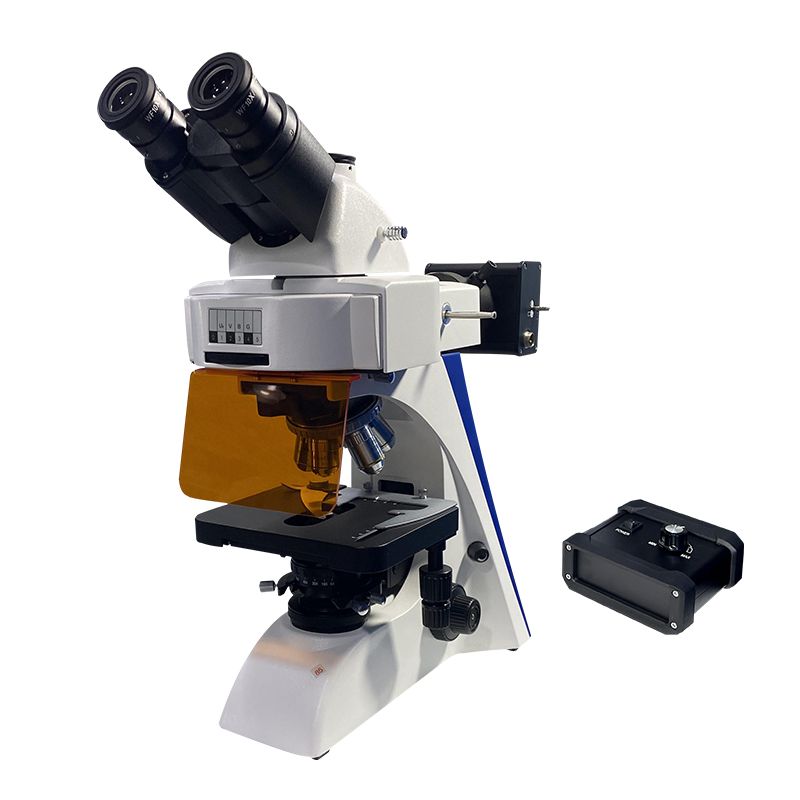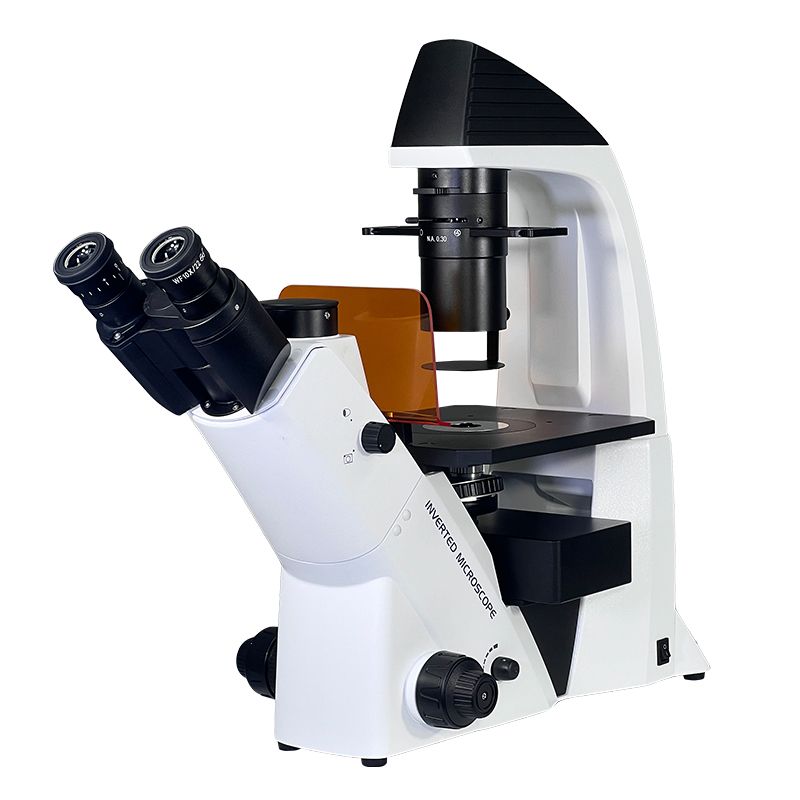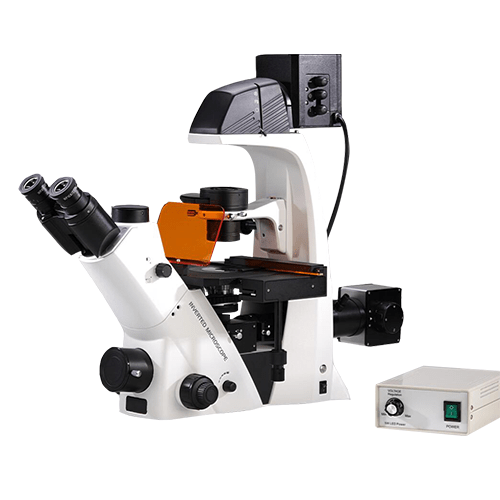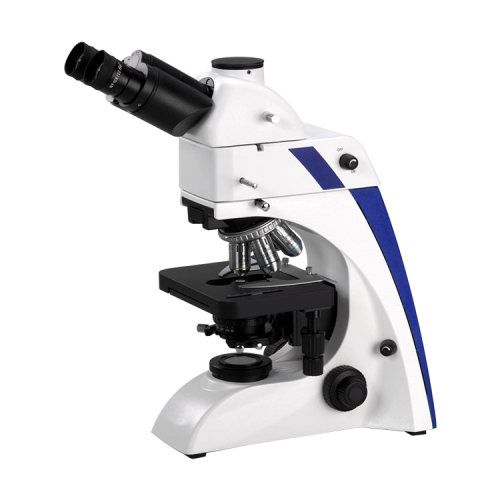A powerful tool for determining the amount and distribution of particular molecules in a sample, a fluorescence microscope can be used to observe and quantify. There are lots of advantages of the fluorescence microscope. Fluorescence microscopy allows you to visualize structures and processes inside cells and tissues that are invisible under a traditional microscope. This opens up a whole new dimension for research in biology, medicine, materials science, and many other fields. By observing the location and distribution of fluorescently labeled molecules, you can gain valuable insights into cellular dynamics, protein interactions, gene expression, and other important biological processes. Fluorescence microscopy has been instrumental in many groundbreaking discoveries, such as the identification of specific proteins involved in disease, the development of new drugs and therapies, and the understanding of fundamental cellular mechanisms. However, it is important to be aware of the safety considerations associated with using a fluorescence microscope.

The Basic Process of Using a Fluorescence Microscope
Preparation:
- Gather your materials: You will need your prepared sample, the microscope, immersion oil (if necessary), distilled water, and cleaning supplies.
- Turn on the microscope and adjust the settings: The majority of fluorescence microscopes have specific settings for fluorescence imaging. Check the manual for your specific model to ensure you’re using the proper excitation and emission filters.
- Place your sample on the stage: Use the slide holder to secure your sample on the microscope stage. Center it over the objective lens.
Focusing and Observation:
- Start with the lowest magnification: To find your sample, start with the lowest objective lens (such as 4x). You can gradually increase the magnification as needed.
- Focus using the coarse and fine adjustment knobs: Gently turn the knobs to bring your sample into sharp focus.
- Adjust the brightness and contrast: To adjust the brightness of the fluorescence signal, turn the intensity control knob. The diaphragm lever allows you to fine-tune the contrast.
- Observe the fluorescence: Look for brightly colored areas on your sample that may contain fluorescent molecules. You can use the stage control knobs to move your sample around and look at different areas.
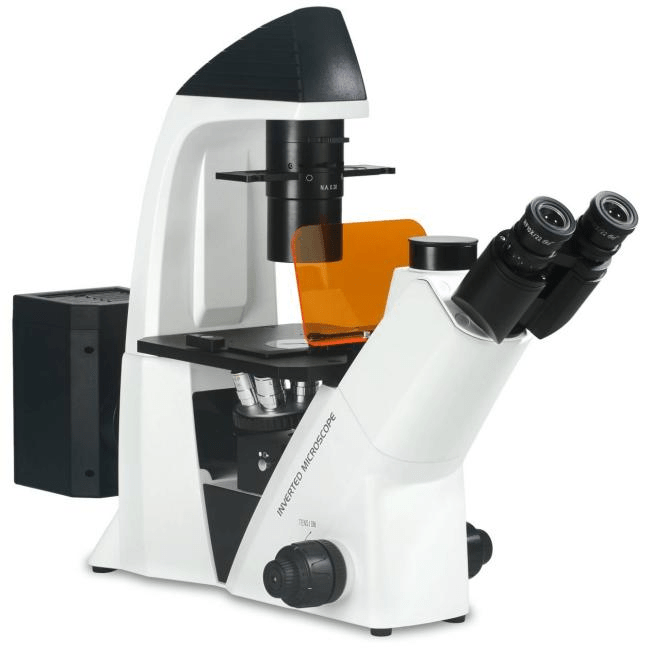
What Are the Safety Considerations for Using a Fluorescence Microscope?
Here are some of the safety considerations for using a fluorescence microscope:
Consideration 1: Ultraviolet (UV) radiation
One of the safety considerations for using a fluorescence microscope is ultraviolet (UV) radiation since it can damage the skin and eyes. When using a fluorescence microscope, it’s crucial to wear safety glasses that block UV light to protect your eyes from UV radiation. You should also avoid looking directly into the light path of the microscope. Wearing safety gear like a lab coat or long sleeves may also be necessary if you’re working with a fluorescence microscope that releases a lot of UV radiation. You should also avoid working with the microscope in direct sunlight or near other sources of UV radiation.
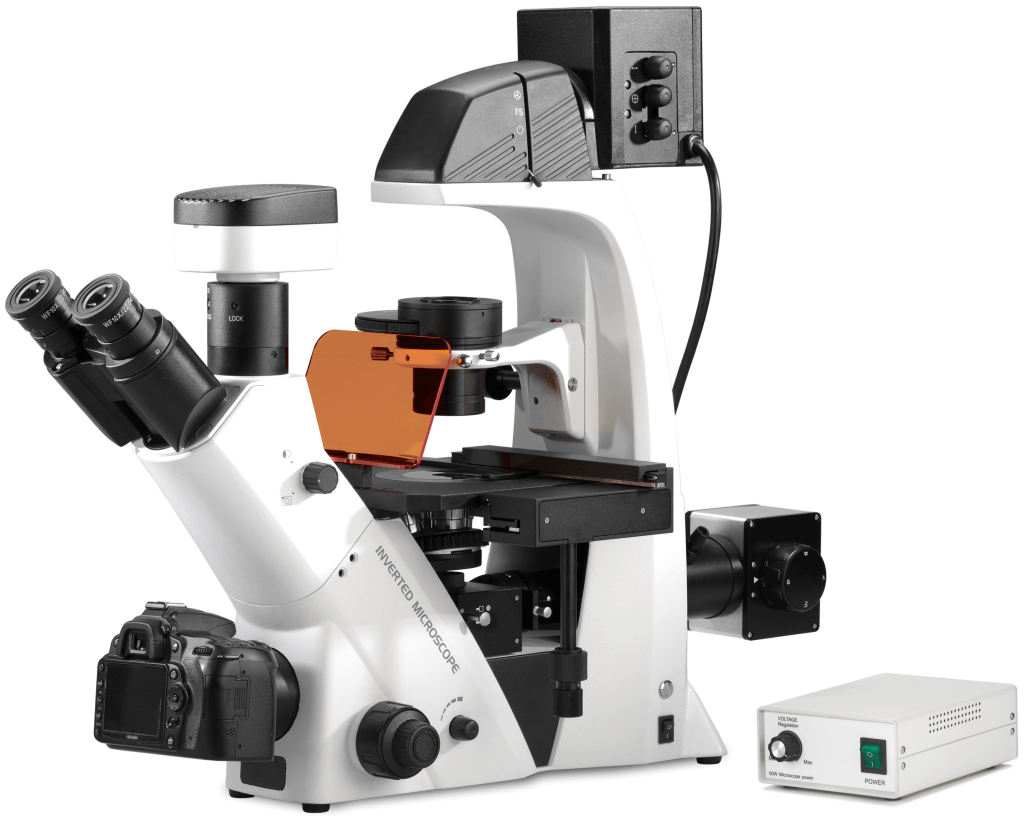
Consideration 2: Photobleaching
The destruction of fluorescent molecules in a sample by photobleaching is one of the safety considerations when using a fluorescence microscope. When fluorescent molecules are exposed to light for a prolonged period, they can be destroyed or bleached, which means they will no longer emit light. The sample’s fluorescent signal may be obscured or even impossible to perceive as a result. To prevent photobleaching, it is important to use the lowest intensity of light possible and the shortest exposure time necessary to get the desired results. Additionally, you want to avoid repeating photographing the same region of the sample. You might need to apply a filter to lessen the light’s intensity if you’re using a fluorescence microscope with a strong light source. You can also use a technique called confocal microscopy, which uses a laser to scan the sample point by point, which reduces the amount of light that is exposed to the sample.
Consideration 3: Toxic chemicals
Because they can injure the respiratory system, skin, and eyes, toxic chemicals are one of the safety considerations for using a fluorescence microscope. When handling chemicals, put on a lab coat, gloves, and safety glasses. Work in a room with good ventilation. Follow the manufacturer’s directions when disposing of chemicals correctly. You may help defend yourself from the negative effects of toxic chemicals by adhering to these safety practices.
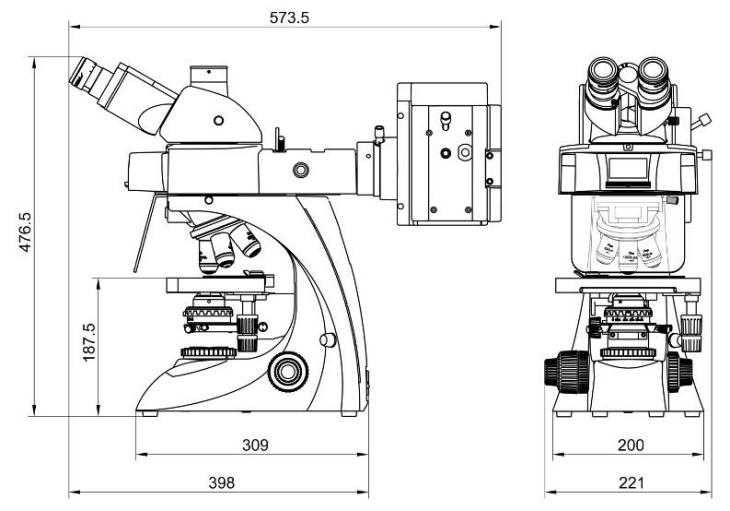
Consideration 4: Electrical hazards
Since electrical hazards might result in electric shock, burns, or fire, they should be taken into account when using a fluorescence microscope. Fluorescence microscopes can contain high-voltage components, so it is important to disconnect the power before making any adjustments to the microscope. Do not touch any electrical components unless you are sure they are turned off. Be careful not to overload the electrical outlets. Keep the microscope away from flammable materials. When using a fluorescence microscope, you can help avoid electrical hazards by taking the necessary safety procedures.
Consideration 5: Fire hazards
Fire hazards are one of the safety considerations for using a fluorescence microscope because the light source in a fluorescence microscope can produce heat. Fire can occur if flammable materials, such as alcohol or ether, are ignited by the heat from the light source. Explosion can occur if flammable materials are mixed with oxygen and ignited by the heat from the light source. Burns can occur if you touch a hot surface, such as the light source or the microscope stage. Avoid using combustible substances close to the microscope. Don’t fill the electrical sockets. Regularly check the microscope for any signs of deterioration.
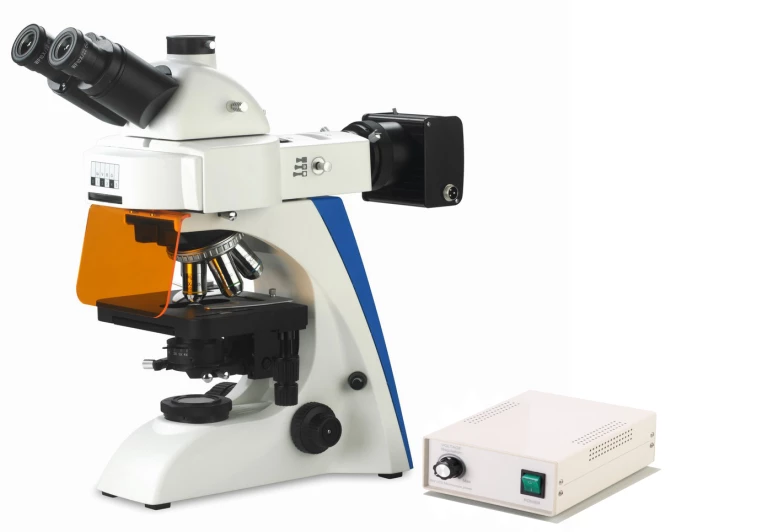
Conclusion
When using a fluorescence microscope, it is crucial to be aware of these safety issues and to take the necessary precautions. Fluorescent molecules are excited by light in fluorescent microscopes, and part of this light can be hazardous to the skin and eyes. You can take precautions to safeguard yourself against radiation exposure by being aware of the safety considerations. Fluorescence microscopes are fragile equipment that can be harmed by misuse or chemical exposure. By knowing the safety considerations, you can help to prevent damage to the microscope. Fluorescence microscopes can pose several safety hazards, such as electrical shock, burns, and fire. By knowing the safety considerations, you can help to prevent accidents and injuries. Chongqing Scope Instrument Co., Ltd. has professional products, technology, and services. If you want more information, please click here.
